Para-Pillars
Emily Hoar
Jeff Barber’s “Para-Pillars” memorializes thirty years of St. Olaf’s Paracollege, which provided innovative, individualized, interdisciplinary learning. The sculptor, class of 1978, is himself an alumnus of the “college within a college” system.
“Para-Pillars” consists of three stone columns and a slab placed in the ground to represent the corners of a triangle. The first column of granite supports a standing figure cast in bronze. Another corner—two sandstone columns from the college’s old Ytterboe Hall—supports a reclining figure, also in bronze. The third corner of empty plinth encourages interaction, inviting people to enter the triangle to experience its dynamic relationships.
The St. Olaf Paracollege began in 1969 and offered students an alternate means for obtaining a bachelor’s degree.
“[For students at the time] the watchword was relevance,” said Associate Professor of Religion David Booth, who tutored in the Paracollege from 1985 to 2000. “They didn’t want an education that would reproduce their parents’ boring lives. They wanted to know the truth about reality so they could bring about peace and liberation.”
With a curriculum centered on the student, he or she designed a unique major. The Paracollege was phased out starting in 1998; it was replaced by the Center for Integrative Studies, which continues to integrate Paracollege innovations into the core curriculum.
The sculpture was dedicated in 2000 during commencement and reunion weekend. Thirty-one students graduated from the Paracollege in its final year. At the dedication of the sculpture, DeAne Lagerquist, the Paracollege’s last senior tutor, cited a Max DePree quotation: “Have the courage to commit to other people’s wild ideas.”
“When I read this advice,” Lagerquist said, “I recognize it as a key element in the genius of the Paracollege. . . . Over three decades of students have committed themselves to the wild ideas that education is not contained in disciplinary boxes, nor is it separated from living. Tutors have committed themselves to all manner of wild ideas proposed for tutorials or senior projects.”
Senior Tutor Professor David Wee
Photo taken during the ParaDaze celebration. Source St. Olaf College Archives Date October 7-9, 1976
Paracollege Protest 1998
Students and staff protest St. Olaf’s strategic plan to phase out the Paracollege. Source St. Olaf College Archives Date 1998
Paracollege Making Noise!
Members of the Paracollege , which began in 1969, enjoyed nonconformity. Notice the pillars of old Ytterboe Hall form the basis of the “Para-Pillars” memorial. Source St. Olaf College Archives Date October 7-9, 1976
Paracollege Faculty and Staff
(L-R, back row): Howard Thorsheim, Bobbi Helling, Anne Hall, Paul Campbell, Ron Lee. (Front Row): Allen Hanson, William “Bill” Narum (senior tutor) and Erling Jorstad, Source St. Olaf College Archives Date Ca. 1974
Mighty Tutors
Paracollege faculty, ca. 1999 (L-R, front row): Bruce Nordstrom-Loeb, Chuck Huff, Carol Holly, David Booth, DeAne Lagerquist, Jim Farrell, (back row): David Wee, John Poling, Matt Rohn. (not pictured): Vicki Harper & Olivia Frey. Creator St. Olaf College Archives
Jane Burnett at the Para-Pillar Dedication
The sculpture was dedicated in 2000 during commencement and reunion weekend. Thirty-one students graduated from the Paracollege in its final year. Source St. Olaf College Archives Date June 2000
Current View: Para-Pillar Statue
This standing figure is just one part of the memorial dedicated to the St. Olaf Paracollege. Creator Melanie Jones Date May 10, 2015
Current View: Para-Pillar Statue
This reclining statue is just one part of three of the memorial dedicated to the St. Olaf Paracollege. Creator Melanie Jones Date May 10, 2015.
Current View: Para Pillar Plaque
This plaque commemorates the St. Olaf Paracollege. Jeff Barber ’78, a graduate of the Paracollege, designed this memorial. Creator Melanie Jones Date April 17, 2015
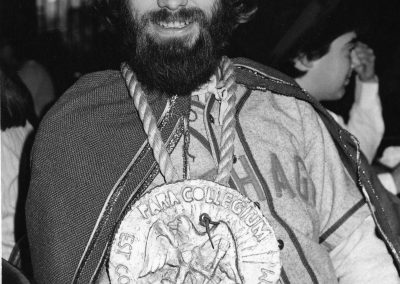

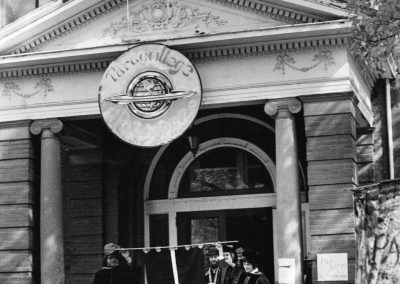
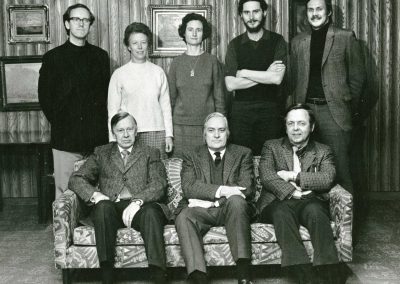
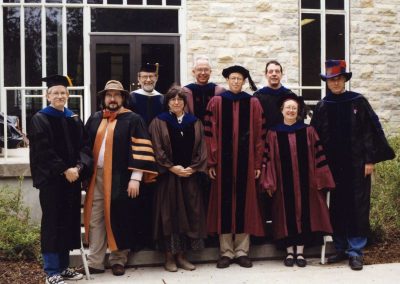
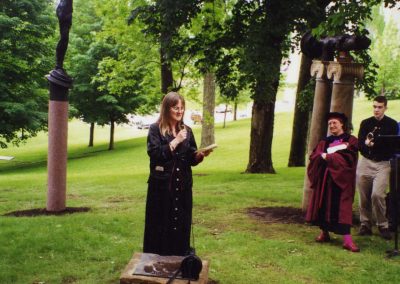
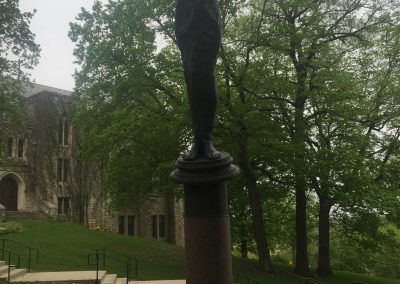
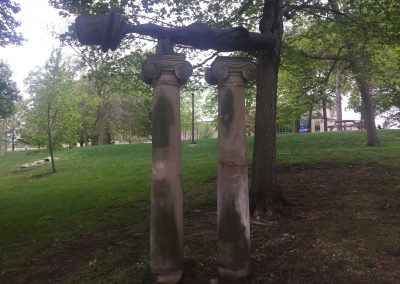
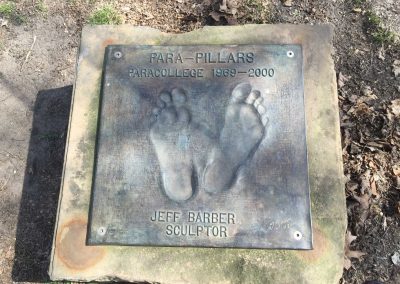
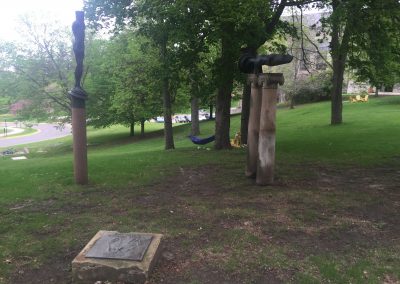
Recent Comments